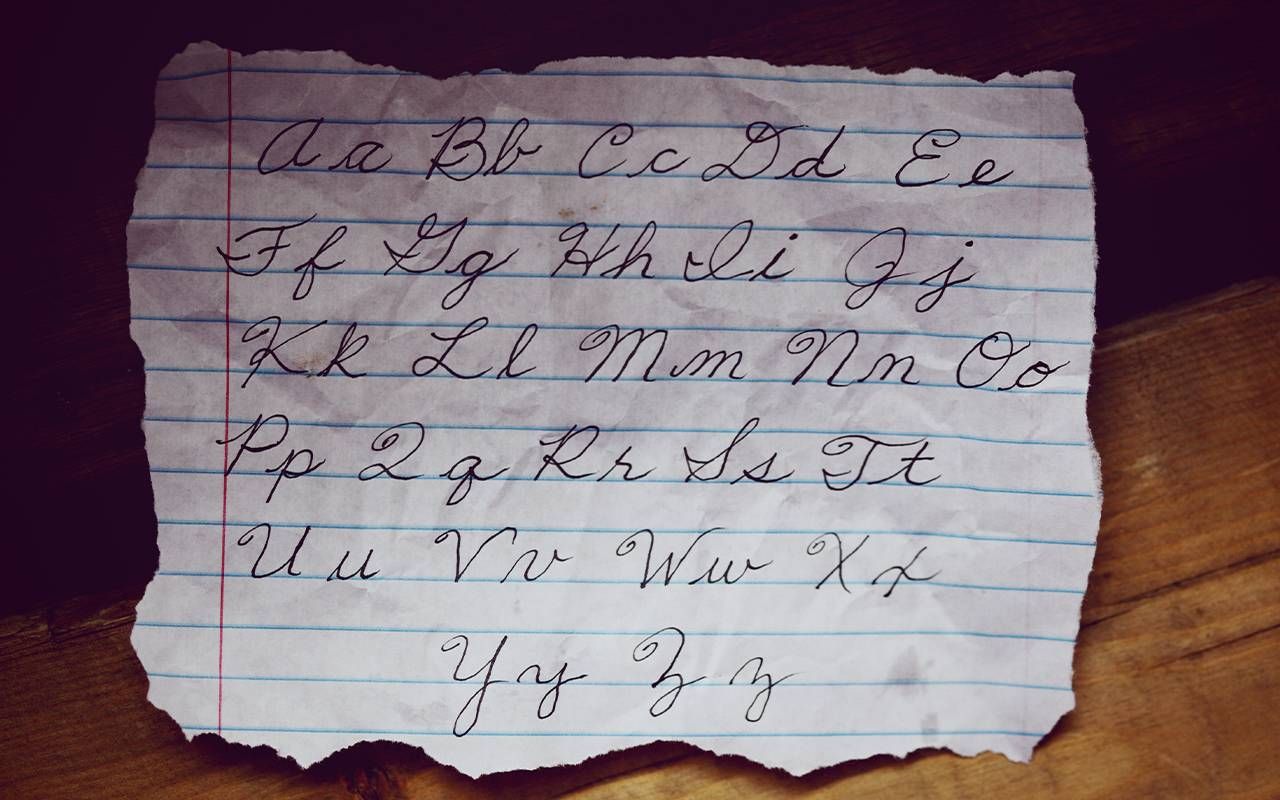Can Cursive Be Saved?
Sure, emails are quicker, but there is so much value in capturing our thoughts with pen and paper
The kind and patient woman working at our local passport office said to my teenage son, "It's OK, buddy. Here, take a few minutes to practice." And to me she commented, "I see this all the time. These kids don't know how to sign their names anymore."
She had noticed that Patrick wasn't signing his passport application — was, in fact, paralyzed, with pen hovering over paper. He had not kept up with his cursive writing since he was in elementary school. Pat was a keyboard warrior; on the occasions when he needed to write something by hand, he printed. Now that he had to really sign his name on an official document, my son was struggling.

How Handwriting Can Be Revealing
My sister Maureen was killed in a car accident at age 23. I'd fortunately saved dozens of letters from her. I wanted to help my kids, born long after her death, to know their late aunt in an important way. So, in 2021, the 40th anniversary of her passing, I had the letters photocopied and bound, one "book" for each of my five children.
Afterward, I realized that Maureen's big, loopy script was almost indecipherable to her nieces and nephews. I regretted not typing the letters for them. But her handwriting was so reflective of her expansive, generous personality; to me, it conveyed Mo's essence in a way typing never could.
I realized that Maureen's big, loopy script was almost indecipherable to her nieces and nephews.
My in-laws never finished high school. However, they remained very proud of what they had learned during their elementary school years in Indianapolis, especially their cursive handwriting. Products of Catholic school, they had perfected the Palmer Method (in fact, my mother-in-law forever kept a large certificate marking her excellent achievement in handwriting).
My husband Steve's father hitchhiked alone as a teenager from Indiana to San Francisco in 1928. At a recent family reunion, we were given a brittle, yellowed scroll. Unrolled, we read the entire story of his cross-country adventure — written from Dad Seyfried to his parents, in elegant cursive.
While Steve and I had no trouble deciphering his father's penmanship, I realized that my own kids would be as lost looking at this family treasure, as if they were asked to read ancient hieroglyphs. I thought of the many centuries of famous handwritten documents and letters, and the wonderful window into our history they provide. Could it be that the dawn of computers was also the death-knell of cursive writing?
Saving Emails for Posterity?
When was the last time you received a handwritten letter? It's been quite a while for me. Our modern communication primarily consists of emails and texts, which are, granted, so much quicker and more efficient.
"All of us, not just students and scholars, will be affected by cursive's loss."
But do you print out all your personal correspondence, so it can be saved for posterity? I know I don't. I do tend not to delete personal notes received on my computer, but they then just sit there in cyberspace, and someday I know they will disappear.
In 2010, handwriting was removed as a national common core subject for grades K-12. It was no longer a school requirement, and I imagine it made life a bit easier for teachers, who now could grade typewritten papers without straining to make out poorly scribbled words and phrases. By middle school, students rely on computers for completing their writing assignments, and are no longer writing much of anything by hand.
It's a matter of concern for historians, who foresee coming generations unable to read old handwritten documents at all.
According to Drew Gilpin Faust, former president of Harvard, "All of us, not just students and scholars, will be affected by cursive's loss. The inability to read handwriting deprives society of direct access to its own past. We will become reliant on a small group of trained translators and experts to report what history — including the documents and papers of our own families — was about."
Can cursive be saved? Several states are reinstating it in their curricula, and that's a hopeful sign. Faust recalls a teacher who noticed that, during his young students' free time, one little girl was bringing in cursive workbooks. A group of her friends were teaching themselves cursive, even though it was not being taught in class.
Keeping the Excitement of Cursive Alive
Our suburban Philadelphia school district still does offer instruction, and I'm grateful. My grandson Aiden's third grade teacher, Dana Dahl, has been teaching cursive for 22 years. She says that even today, the children are so excited to learn. She writes out cursive name tags for their desks the first day of school, and for some, it's the first time they have ever seen their names handwritten.
She writes out cursive name tags for their desks the first day of school, and for some, it's the first time they have ever seen their names handwritten.
While Dahl acknowledges to her students that it's tricky, she tells them handwriting is an important skill —and that they will eventually be able to write cursive faster than they can print.
So how do we keep that excitement about cursive alive? We can nurture an appreciation for it in our young people. We can encourage them to maintain and sharpen their writing skills at home, even if their school work is mostly done on a computer. Dahl suggests that the students keep handwritten journals over the summers, and she reminds them how personal and special a handwritten note is to the recipient.
With the advent of cassette tapes and CDs, it seemed inevitable that the LP would die. Yet more and more musicians continue to see the value in records, and continue to release music in that format. Several of my music-loving offspring have turntables, and insist there is nothing to compare to the sounds captured on an LP. Records have become "cool" again, with new vinyl being released by Adele, Ed Sheeran, Taylor Swift and many others.
There's no reason cursive can't have a renaissance too. There is still so much value in capturing our thoughts with pen and paper. Let's do it. Let's make cursive cool again.


